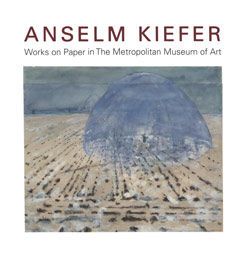Big Iron Fist, Germany
Anselm Kiefer German
Not on view
Kiefer recycled his 1969 self-portraits for new works related to the theme of transformation, as conveyed, for example, in the Babylonian epic of Gilgamesh and the Russian Cubo-Futurist poetry of Velimir Khlebnikov (1885–1922). Among his many distinctions, Khlebnikov devised a suprarational, transcendental language termed zaum (or "beyonsense") that was inspirational for artists such as Kazimir Malevich and Vladimir Tatlin. Kiefer read Khlebnikov’s poetry and was attracted to his invention of what the artist called a "huge system, with numbers, about history and battles and wars." The title of this work relates to a debate in West Germany in the early 1980s about increasing contributions for NATO tanks.
This image cannot be enlarged, viewed at full screen, or downloaded.


